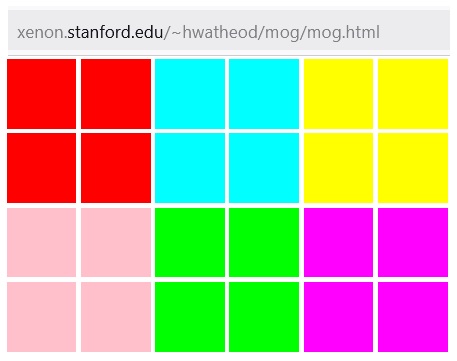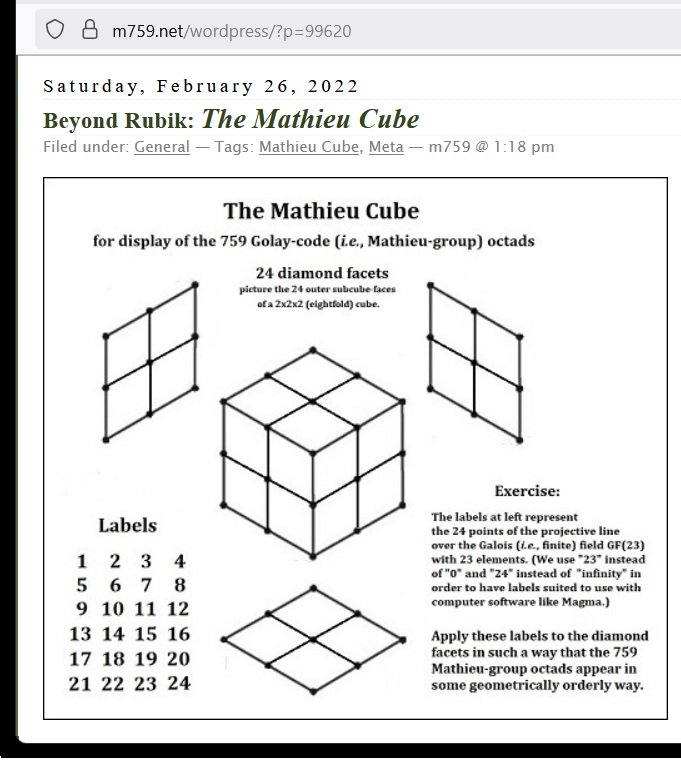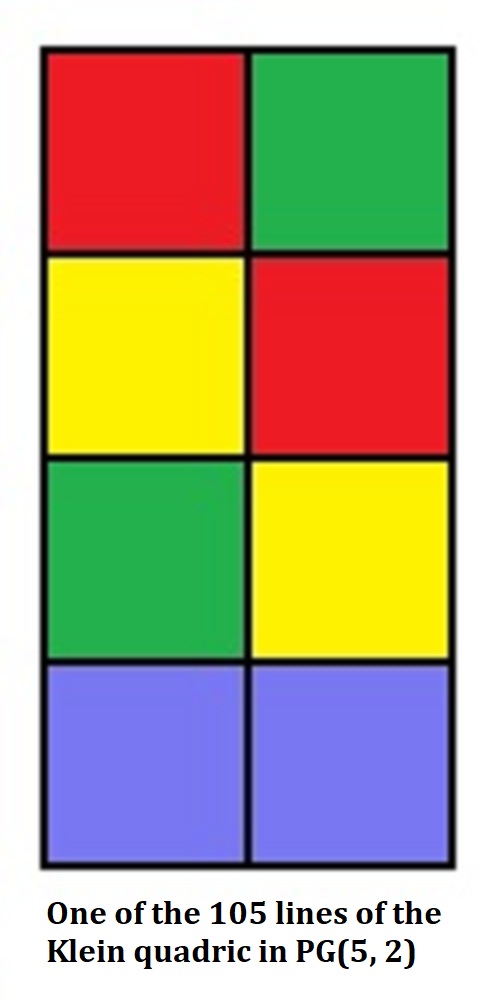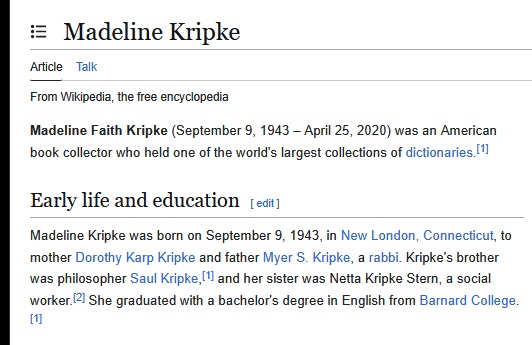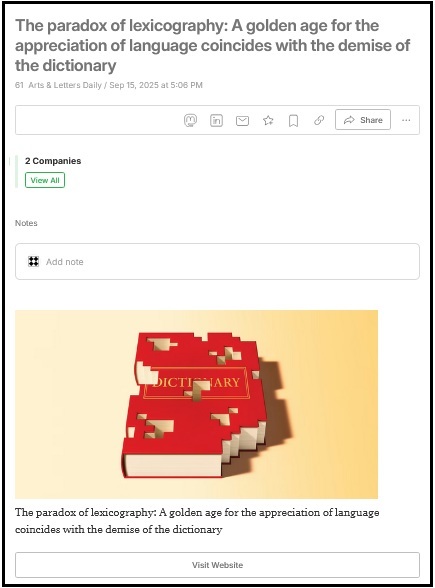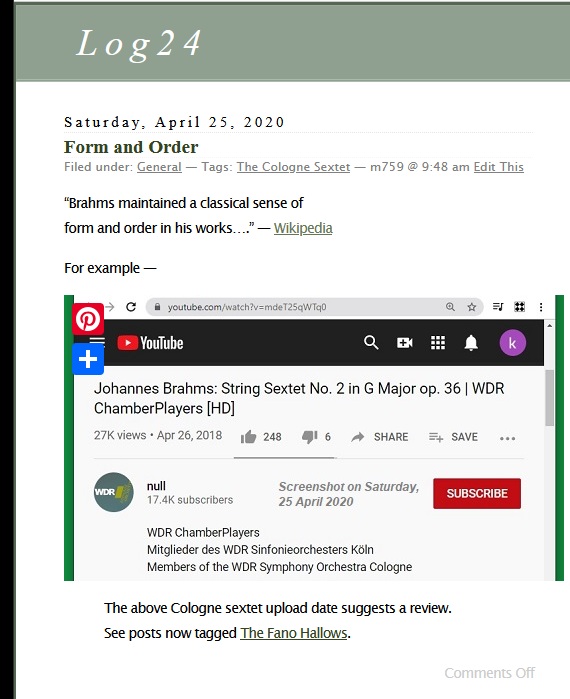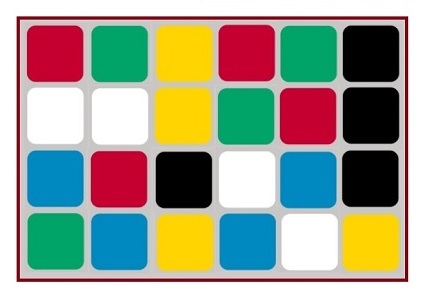Friday, October 17, 2025
Wednesday, October 15, 2025
Sextet Space
“Perhaps the philosophically most relevant feature of modern science
is the emergence of abstract symbolic structures as the hard core
of objectivity behind— as Eddington puts it— the colorful tale of
the subjective storyteller mind.”
— Hermann Weyl, Philosophy of Mathematics and
Natural Science , Princeton, 1949, p. 237
Melissa C. Wong, illustration for "Atlas to the Text,"
by Nicholas T. Rinehart:

The above fanciful illustration pictures 6*9=54 colored squares on the six
faces of a 3x3x3 cube.
Compare and contrast the Aitchison labeling, not unlike the one above,
of 6*4=24 unit squares (or, equivalently, 24 pips at the squares' centers)
on a 2x2x2 cube.
Now consider how the 8-square "brick" of R. T. Curtis may be colored with
four colors using the 105 ways to partition its eight squares into four 2-sets.
By analogy, the 24 squares on a cube's surface, as above, afford a cubical
space for applying six colors to the sextet partitions (into six 4-sets) of Curtis's
Miracle Octad Generator (MOG), using Aitchson's cubical model (with, of course,
the parts to be moved being pips or squares rather than cuboctahedron edges).
The 4-coloring of Curtis bricks is useful in picturing the Klein correspondence.
Are there similar uses of cube 6-colorings? Or 4-colorings? (Group actions on
a 6-set are of considerable combinatorial and algebraic interest because of
the exceptional outer automorphism of S6.)
For a colored presentation of sextet space modeled with a rectangle,
as in the Curtis MOG, see . . .
Monday, September 15, 2025
For Word Collectors . . . “Once in a Lullaby”
Wednesday, June 26, 2024
Tuesday, December 26, 2023
Friday, March 24, 2023
Naturalized Sextet
I prefer the NCS colors of Wednesday's "Exploring Color Space"
to the pastel shades in today's noon post. An illustration:

For the Latin Club Gang*
Saturday, September 11, 2021
Reality for Academia
The title of the previous post, "Ground Omega," suggests a related nightmare . . .

A writer of fiction in the previous post —
"When we say a thing is unreal, we mean it is too real…."
Old joke —
"What you mean 'we,' paleface?"
At Ground Omega in the above My Hero Academia site —
"The twenty-four students are split into six groups of four…."
I prefer the similar splittings of the Curtis Omega —
Thursday, May 14, 2020
Art Issue*
"… the beautiful object
that stood in
for something else.”
— Holland Cotter quoting an art historian
in The New York Times on May 13
From a post of April 27, 2020 —
“The yarns of seamen have a direct simplicity,
the whole meaning of which lies within the shell
of a cracked nut. But Marlow was not typical
(if his propensity to spin yarns be excepted),
and to him the meaning of an episode was not inside
like a kernel but outside….”
— Joseph Conrad in Heart of Darkness
The beautiful object —

Something else —
* The title is a reference to other posts now also tagged Art Issue.
Monday, April 27, 2020
The Cracked Nut
“At that instant he saw, in one blaze of light, an image of unutterable
conviction, the reason why the artist works and lives and has his being –
the reward he seeks –the only reward he really cares about, without which
there is nothing. It is to snare the spirits of mankind in nets of magic,
to make his life prevail through his creation, to wreak the vision of his life,
the rude and painful substance of his own experience, into the congruence
of blazing and enchanted images that are themselves the core of life, the
essential pattern whence all other things proceed, the kernel of eternity.”
— Thomas Wolfe, Of Time and the River
“… the stabiliser of an octad preserves the affine space structure on its
complement, and (from the construction) induces AGL(4,2) on it.
(It induces A8 on the octad, the kernel of this action being the translation
group of the affine space.)”
— Peter J. Cameron,
The Geometry of the Mathieu Groups (pdf)
“The yarns of seamen have a direct simplicity, the whole meaning
of which lies within the shell of a cracked nut. But Marlow was not
typical (if his propensity to spin yarns be excepted), and to him the
meaning of an episode was not inside like a kernel but outside…."
— Joseph Conrad in Heart of Darkness
Friday, April 24, 2020
Art at Cologne
This post was suggested by a New York Review of Books article
on Cologne artist Gerhard Richter in the May 14, 2020, issue —
"The Master of Unknowing," by Susan Tallman.

Some less random art —
Friday, April 28, 2006
Friday April 28, 2006
Exercise
Review the concepts of integritas, consonantia, and claritas in Aquinas:
"For in respect to beauty three things are essential: first of all, integrity or completeness, since beings deprived of wholeness are on this score ugly; and [secondly] a certain required design, or patterned structure; and finally a certain splendor, inasmuch as things are called beautiful which have a certain 'blaze of being' about them…."
— Summa Theologiae Sancti Thomae Aquinatis, I, q. 39, a. 8, as translated by William T. Noon, S.J., in Joyce and Aquinas, Yale University Press, 1957
Review the following three publications cited in a note of April 28, 1985 (21 years ago today):
(1) Cameron, P. J.,
Parallelisms of Complete Designs,
Cambridge University Press, 1976.
(2) Conwell, G. M.,
The 3-space PG(3,2) and its group,
Ann. of Math. 11 (1910) 60-76.
(3) Curtis, R. T.,
A new combinatorial approach to M24,
Math. Proc. Camb. Phil. Soc.
79 (1976) 25-42.
Discuss how the sextet parallelism in (1) illustrates integritas, how the Conwell correspondence in (2) illustrates consonantia, and how the Miracle Octad Generator in (3) illustrates claritas.
